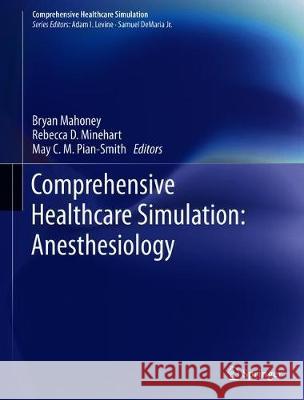Comprehensive Healthcare Simulation: Anesthesiology » książka
topmenu
Comprehensive Healthcare Simulation: Anesthesiology
ISBN-13: 9783030268480 / Angielski / Miękka / 2019 / 348 str.
Kategorie BISAC:
Wydawca:
Springer
Seria wydawnicza:
Język:
Angielski
ISBN-13:
9783030268480
Rok wydania:
2019
Wydanie:
2020
Numer serii:
000783938
Ilość stron:
348
Waga:
1.17 kg
Wymiary:
27.69 x 20.83 x 1.78
Oprawa:
Miękka
Wolumenów:
01
Dodatkowe informacje:
Wydanie ilustrowane











